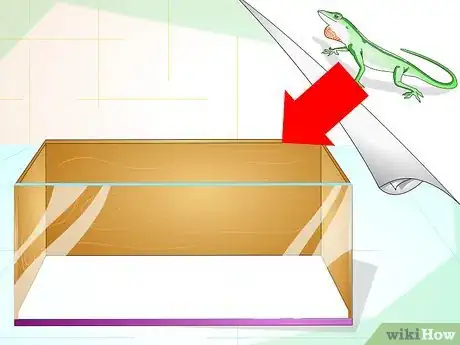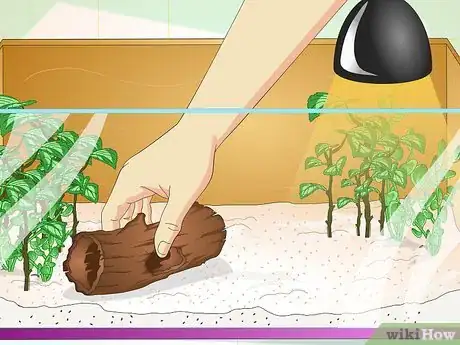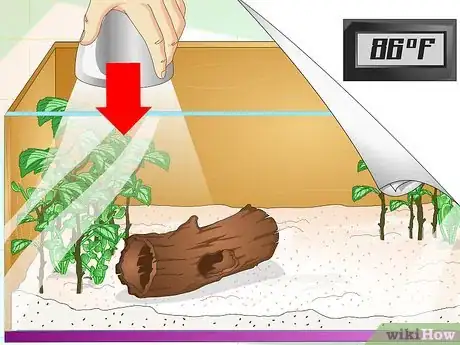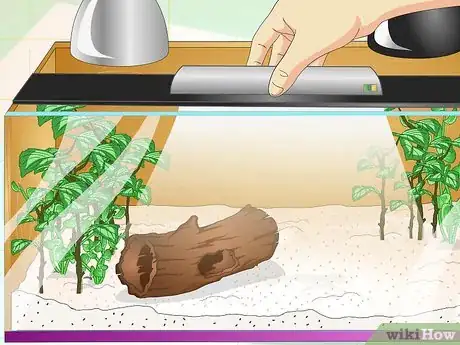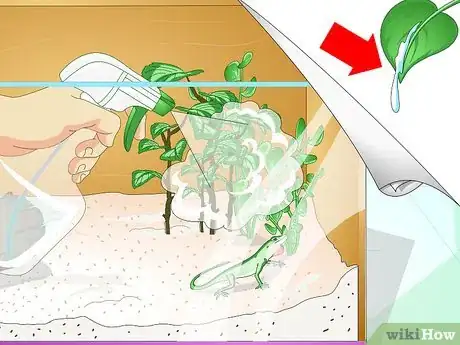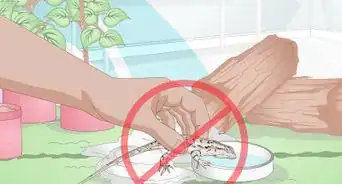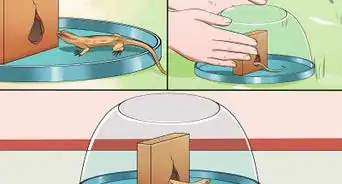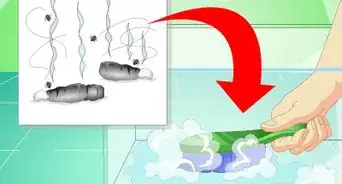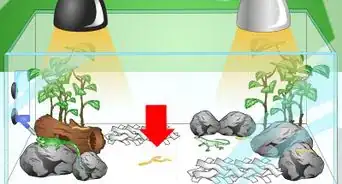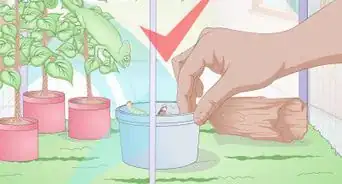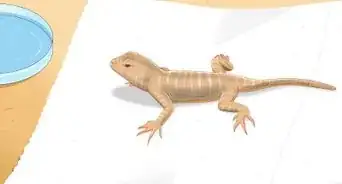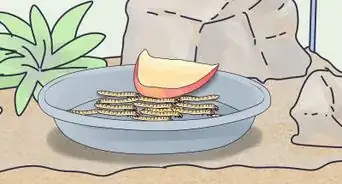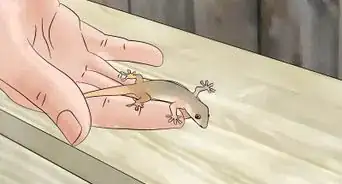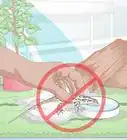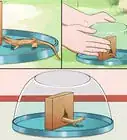This article was co-authored by Pippa Elliott, MRCVS. Dr. Elliott, BVMS, MRCVS is a veterinarian with over 30 years of experience in veterinary surgery and companion animal practice. She graduated from the University of Glasgow in 1987 with a degree in veterinary medicine and surgery. She has worked at the same animal clinic in her hometown for over 20 years.
wikiHow marks an article as reader-approved once it receives enough positive feedback. In this case, 91% of readers who voted found the article helpful, earning it our reader-approved status.
This article has been viewed 76,723 times.
Green Anoles are cute little lizards that are perfect for those new to reptiles. With their bright green coloration and fantastic dewlap displays, these critters make great pets. They are relatively cheap to buy, but you do need to make sure you provide an appropriate habitat for your lizard. They need space, warmth, humidity, and plenty of rocks, sticks and leafy plants to climb around on.
Steps
Preparing a Green Anole Habitat
-
1Get a vivarium. The first thing you will need to get hold of to create a great habitat to help you care for your lizard is an appropriately sized vivarium. This is a container, similar to an aquarium, that has a vented lid. This kind of container is ideal for lizards because it enables you to maintain the heat and the humidity your lizard will need to stay healthy. The size of vivarium you need will depend on the number of green anoles you get.
- Anoles can be kept alone or in groups of one male and a number of females
- A ten-gallon vivarium is big enough for two anoles. If you have two or more male anoles they may fight.[1]
- If you have one male and two or three females you should get a 20 gallon vivarium or tank. This would be approximately 48" x 13" x 20".[2]
-
2Add plants and branches. Once you have your tank you need to equip it with all the items your lizard needs for a stimulating and healthy habitat. Start by laying around two inches of sterile potting soil on the base of the tank and cover this with some bark mulch. Then place several potted plants in the tanks. The plants give your lizard opportunities to climb as well as contributing to the humidity.[3]
- Make sure you only include reptile safe plants. Pothos, spider plants, philodendrons, dracaena, and ficus are all good choices.
- You should add some extra branches propped up against the side of the tank. These are great for climbing on. You can buy prepared branches in your pet store.
- Be wary of bringing in branches from outside as these may have parasites.
Advertisement -
3Provide a basking area. You should provide an area within the tank that is kept at a higher temperature than the rest of the tank during the day. This is the basking area where your anole will relax during the day. You should keep this area at around 85-90 Fahrenheit.[4] You will need a secondary heat source for this area. This heat source should not cover more than around 25% of the total space of the habitat.
- You could use a 50-75 watt incandescent bulb which you have secured in a ceramic base. The lizard should not be able to reach or touch the bulb itself.
- There are also specialist basking lights available from your pet store.
- Never use hot rocks as heat sources for anoles.[5]
-
4Create hiding areas. Your lizard will want plenty of places where he can hide away, under logs as well as behind plants and branches. You can create a special hiding house for your lizard just by placing appropriate bits of wood or bark in the tank. It's a good idea to have hiding places in the basking area. You can also buy special hiding houses from your pet store to place into your tank.
Providing the Necessary Heat, Light and Humidity
-
1Get the right temperature. Anoles are natives of warm regions of the south-east US, and places like Cuba, and the Caribbean. If you have anoles as pets you need to make sure the habitat you construct recreates the kind of temperatures that the lizards would enjoy in the wild. You should try to maintain a temperature of around 75-86ºF / 24–30ºC during the day. At night the temperature should drop to around 65-75 Fahrenheit.[6]
- You can use heating lamps and thermometers to control and monitor the temperature inside the vivarium.
- At night, you can use specialist nocturnal incandescent light bulbs which produce heat, but not much light. These can be expensive.
- An alternative is a heating pad which you can place underneath the tank.[7]
-
2Provide UVB light. Your lizard needs exposure to UVB light so he can synthesize vitamin D3 and metabolize calcium. Your lizard needs free access to 8-12 hours of UVB light a day. Insufficient exposure to UVB will lead to mineral deficiencies and physical problems for your green anole. Your lizard will decide when to bask in the light and when to sit in the shade, but you need to make the light available for him.
- The sun is the best source of ultraviolet light. If this is not practical arrange a combination of visible light from fluorescent or incandescent lights and UVB light from a reptile black light.
- UV light will not penetrate glass, so if you are using overhead UVB light sources, the top of the tank will need to be mesh so the light can get through.[8]
-
3Control the humidity with water. Anoles will like a habitat that is humid, but not the kind of humidity you would expect from a wet rainforest environment. Aim for a humidity of around 60-70%. You can do this quite simply by ensuring that water is going into the air in the container. You can purchase a water dripper or a mister system which will do this automatically. Be sure to monitor it regularly to check it is working effectively.
- An alternative to this is to spray the leaves of the plants in the container with purified water a few times a day.
- Lizards are used to drinking water from leaves, so this is also a good way to provide drinking water.
- Not all lizards will learn to drink from a bowl so you should ensure that your lizards have another way to access to drinking water, such as the dew on leaves.[9]
Warnings
- If using a heat pad, monitor your lizard carefully and watch for any addiction, as these can lead to burns. That would be bad for your lizard.⧼thumbs_response⧽
Things You'll Need
- 10–15 gallon (37.9–56.8 L) Terrarium
- Gravel
- Tropical Soil
- Exo-Terra Hide
- Forest Branch
- Feeding Dish
- Plants
- Leaf Litter
- UVA Basking Light
- UVB fluorescent Light
- Spray Bottle
- Crickets and Mealworms
- Thermometer and Hygrometer
References
- ↑ http://www.peteducation.com/article.cfm?c=17+1796&aid=3304
- ↑ http://www.anapsid.org/anole.html
- ↑ http://www.anapsid.org/anole.html
- ↑ http://www.anapsid.org/anole.html
- ↑ http://www.peteducation.com/article.cfm?c=17+1796&aid=3304
- ↑ http://www.anapsid.org/anole.html
- ↑ http://www.peteducation.com/article.cfm?c=17+1796&aid=3304
- ↑ http://www.peteducation.com/article.cfm?c=17+1796&aid=3304
- ↑ http://www.anapsid.org/anole.html
About This Article
To create a green anole habitat, obtain a 10 gallon vivarium for two anoles or a 20 gallon vivarium for three or four anoles. Add reptile safe plants and branches to contribute to the humidity and give your lizards a place to climb. To create the right environment for your green anoles, use heating lamps and thermometers to keep the temperature at 75 to 86 °F during the day and 65 to 75 °F at night. You can also create hiding areas for your green anoles by using pieces of wood or special hiding houses purchased from the pet store. For more tips from our Veterinary reviewer, including why heating lamps are necessary, read on!
